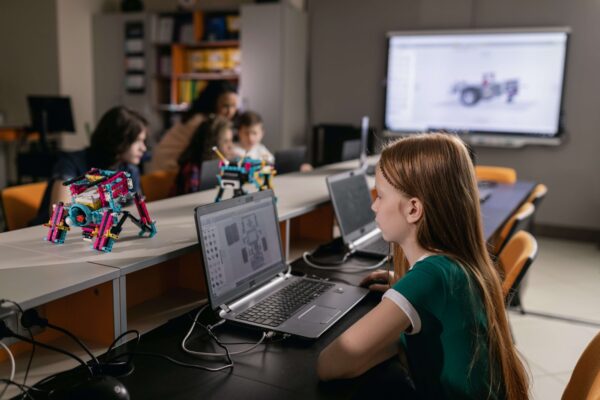
In the rapidly evolving landscape of education, technology is playing a pivotal role in transforming traditional classrooms into dynamic and interactive learning environments. This article explores the latest tech trends in education, showcasing how innovation is reshaping the way students learn, educators teach, and institutions operate, ultimately paving the way for the classroom of tomorrow.
Introduction
In an era characterized by technological advancement, education is undergoing a profound transformation. The integration of technology into classrooms is redefining teaching and learning, emphasizing the need for 21st-century skills that prepare students for a rapidly changing world. This article delves into the tech trends that are reshaping education and laying the foundation for the classroom of tomorrow.
Online Learning Platforms
Online learning platforms have revolutionized education, providing accessible and flexible learning opportunities. The growth of e-learning has led to personalized learning experiences, catering to diverse student needs and preferences.
Blended Learning Environments
Blended learning combines digital and traditional teaching methods, allowing educators to create more engaging and interactive lessons. This approach enhances student engagement and provides a balance between face-to-face and online learning.
Virtual Reality (VR) and Augmented Reality (AR)
VR and AR offer immersive learning experiences that transcend traditional boundaries. These technologies enable students to explore complex concepts and simulations, bringing real-world applications into the classroom.
Artificial Intelligence (AI) in Education
AI is revolutionizing education through intelligent tutoring systems and adaptive assessments. AI-powered tools provide personalized learning pathways, offer immediate feedback, and support educators in optimizing teaching strategies.
Gamification and Educational Games
Gamification and educational games make learning enjoyable and interactive. They boost motivation, enhance retention, and encourage students to apply their knowledge in real-world contexts.
EdTech for Special Needs Education
Technology is making education more inclusive through assistive technologies and tailored learning experiences for students with diverse needs. It fosters equal opportunities for all learners.
Data Analytics and Learning Analytics
Data analytics empower educators and institutions to make data-driven decisions. Learning analytics help identify at-risk students and personalize interventions, leading to improved student outcomes and retention rates.
Remote Learning and Distance Education
The COVID-19 pandemic accelerated the adoption of remote learning. Its impact has reshaped the future of education, with hybrid and remote learning likely to remain integral components of education systems.
Teacher Professional Development
Empowering educators with technology training is essential for successful integration. Lifelong learning in the digital age ensures that teachers can adapt to evolving educational technologies.
Cybersecurity in Education
Protecting student data and privacy is paramount in the digital age. Robust cybersecurity measures are crucial to maintaining secure online learning environments and safeguarding sensitive information.
Challenges and Ethical Considerations
Challenges such as the digital divide, accessibility issues, screen time concerns, and data privacy must be addressed to ensure equitable and ethical technology integration in education.
The Benefits of Educational Technology
Educational technology offers numerous benefits, including improved access to quality education, fostering innovation, and developing critical thinking skills, empowering learners to thrive in a rapidly changing world.
The Future of Education Technology
The future of education technology holds exciting possibilities. Predictions include advancements in adaptive learning, AI-driven personalized education, and the continued integration of technology to prepare students for an uncertain future.
Conclusion
The transformative power of technology in education is undeniable. By embracing these tech trends, education can become more accessible, engaging, and effective, shaping a brighter future for learners worldwide. The classroom of tomorrow is not just a vision; it’s a reality driven by innovation and a commitment to providing quality education for all.




